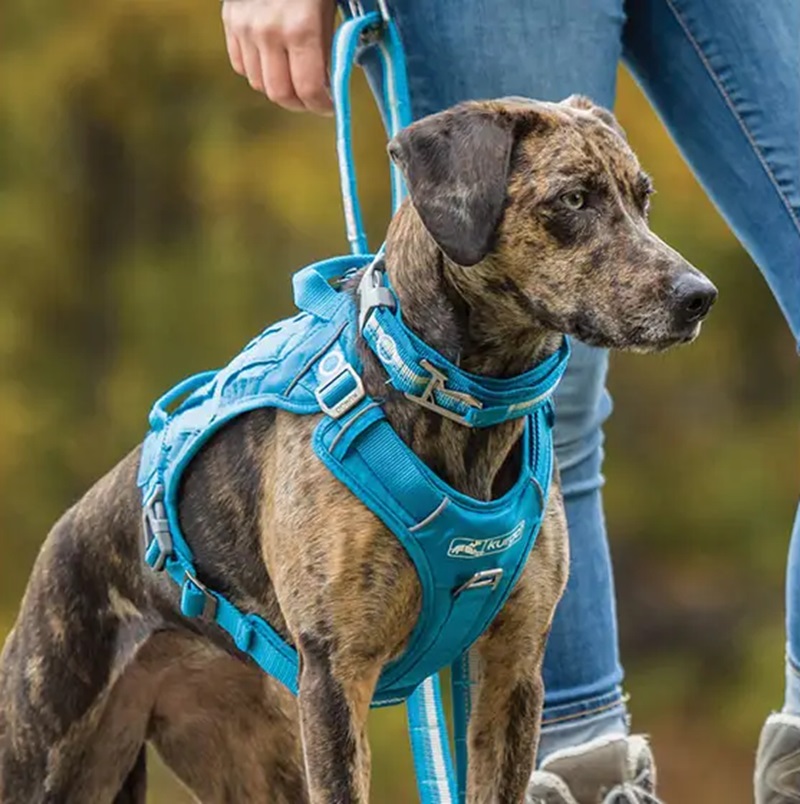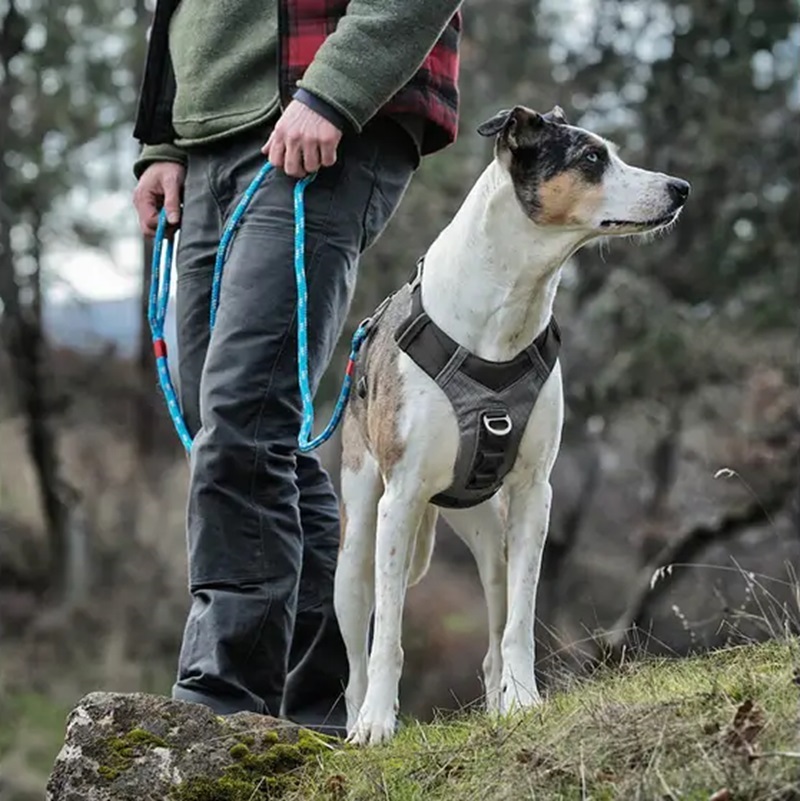Successfully leash training your pup is one of the most crucial milestones in your puppy’s life and yours as a pet parent. Going for walks without your dog pulling or becoming twisted in his leash is a skill he’ll have for the rest of his life.
However, to correctly leash-train your puppy, you must purchase a high-quality harness, making the process much easier and safer. You’d think selecting a leash for your new dog would be a straightforward chore – until you browse an online pet store, confronted with an overwhelming number of alternatives.
In this article, we provide a terrific overview of everything you need to know about your puppy wearing a harness and how to choose and fit the correct harness for your puppy.
Is It OK to Keep a Harness on a Puppy?

Pups usually benefit more from a well-fitting harness than a collar. Here are some of the reasons why.
- If excited puppies lunge at people or things, a harness won’t damage them. When puppies tug, collars can damage their throats. That’s why harnesses are better.
- Your puppy can walk securely and be trained and socialised with a harness and leash. Think about the peace of mind this brings.
- Harnesses are safer than collars because wiggly puppies are less prone to slide them – another calming benefit (for you and the pup).
- Attaching a long lead or recall line to the harness back keeps your puppy safe during recall training.
- A puppy car harness is safer than attaching their collar to a seat belt clip. You don’t want them to experience a severe pull from the next sudden break.
When Should I Start Harness Training My Puppy?
A puppy can wear a harness at eight weeks, at the same age recommended with their collar. If this is your preferred walking item or you’ve been advised to use a harness for their breed, get them used to it early.
How Do I Choose a Puppy Harness?

There are several considerations when searching for a safe and reliable puppy training harness. A high-quality harness is adjustable, has a front and back clip, and fits your dog comfortably (without chafing or slipping out).
Is It Adjustable?
Most professional dog trainers prefer an easily adjustable dog harness because puppies from most breeds quickly grow. It’s best if it has many adjustable straps. Adjustability is crucial because you want to ensure that your puppy’s harness not only fits well now but will also fit well as he develops. Puppies aren’t always the finest walkers, so we must do all possible to keep them from slipping out of the harness and causing a potentially dangerous situation.
Some harnesses include adjustment sliders on all straps, while others just have adjustment sliders on one or two straps, so make sure you understand how your puppy will grow and consider that when selecting the correct harness for your dog.
Does It Have a Front and Back Clip?

Some harnesses include only a D-ring clip attachment near your dog’s neck on the back of the harness. Other options have both the back clip and a clip on the harness’s chest strap, which could make training your puppy to walk on a leash much easier.
The front clip allows an owner to control the dog’s front half and makes it easier to redirect, manoeuvre, and establish a proper walking position by your side with a short but not tense leash. When engaging in free-roaming activities such as sniffing walks, hikes, or trails, the back clip keeps the leash out of their way. Having the option of walking your puppy with either clip may be advantageous for pet parents who are still in the training stages.
What Is It Made Of?
Dog harnesses can be made of nylon straps, the same material as regular flat leashes, padded, cushioned cloth or neoprene. Although most trainers favour nylon strap harnesses, small dogs and puppies who cannot fit into these harnesses may be better suited to padded, fabric harnesses.
If your dog is a small breed, you’ll want to use a lightweight cloth that isn’t too heavy for him. A puppy training harness that can resist an overly zealous tug to say hello is required for a larger breed of dog that develops quite a bit of muscle. Does your puppy turn into a fish when he sees water? A leather harness or one with metal fastenings is not ideal because it will age horribly.
How Do You Put It On?

Harnesses come in a variety of forms and sizes, and how they fit can have an impact on your dog’s comfort. Because these harnesses are the most customisable, trainers typically prescribe a Y- or T-strap fit that slides over your dog’s head, crosses his shoulders, and buckles around his belly.
“Step-in” harnesses are made of nylon or fabric and do not require you to pull anything over your dog’s head; instead, your dog steps into leg slots, and you secure the harness at the back.
Some harnesses are X-shaped, which means they form an X at the chest, which is ideal for pups who pull on their harnesses because it doesn’t put pressure on their trachea. These are nearly always worn over the head.
How Many Points of Contact?
We like puppy harnesses with two contact points, allowing the lead to be attached at the front and back. That’s especially important if you’re using a harness with a double-ended training lead, which is one of the best leads for puppy lead training because you can put one end on the back and the other on the front, keeping the dog balanced and helpful for teaching your puppy not to pull.
